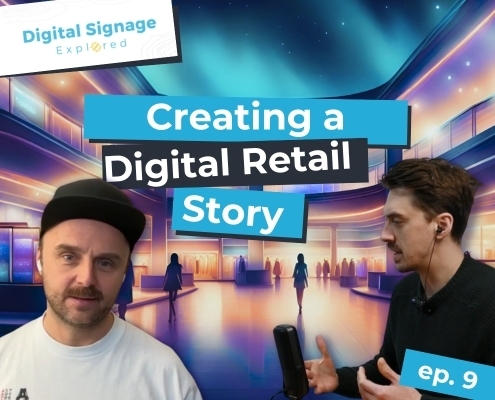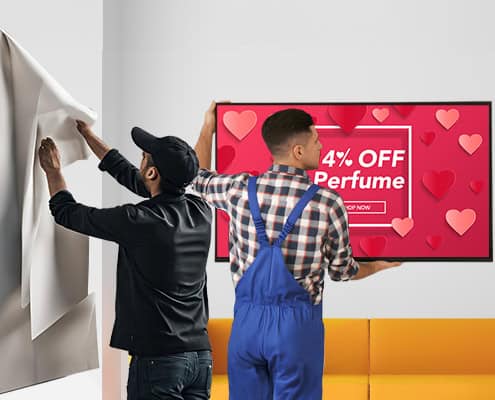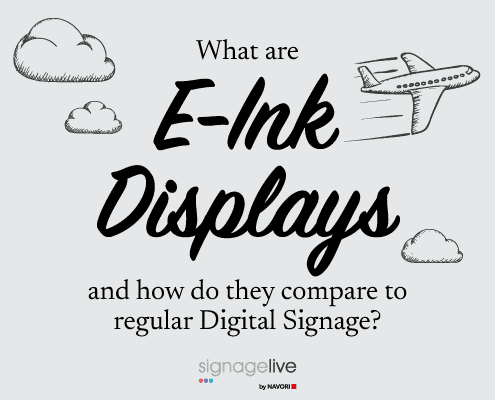You have the space, you have the budget – you may even have some decent content, ready to go, but do you have what it takes to create engaging Digital Signage?! The chances are, probably not!! Without the right content strategy, any Digital Signage project is unlikely to realise its potential. Devising the best strategy for a business isn’t just about making sure that you have some pre-prepared content. As Marco from Muse Content, an acclaimed independent design-driven studio, insists, it’s a process that requires fore-planning and entails a number of steps if you want to get it right. Here are the top three.
1. Define your brand values
Firstly, you have to consider what your brand values are, and what differentiates your business from the competition.
2. Find the communication gaps
The next step is to figure out what the communication gap is – what are you communicating now in-store and how does this fall short of the messaging you need? Does it reflect the brand values that you’ve just identified? This will help clarify what content you need to change, and/or keep.
3. Choose the right Digital Signage space
Creating the right content strategy also involves finding the right Digital Signage location to publish your material. If there’s a Digital Signage message that isn’t being picked up by customers, it probably isn’t being broadcast in a location that makes sense. Using Digital Signage, for instance, to advertise a lunch meal deal near the frozen food aisle, just wouldn’t work. Customers popping in during their lunch break would likely only see the signage if it were at the shopfront, near the check-out or directly in the aisle with the lunch items. Digital Signage is effective, precisely because it enables you to deliver the right message, in the right place and at the right time. Intelligently positioned Digital Signage screens can make all the difference, and as Marco suggests, may even enable you to reduce the number of screens you originally thought you required. Often, just moving Digital Signage screens to the front of your store location can double the exposure of your messaging. What you want to avoid is simply installing a screen somewhere, because there is a space for it.
Another point to consider is that you can transform your business venue and create a memorable customer/visitor/employee experience by the way in which you incorporate your Digital Signage screens into the environment. Muse Creative has worked with many different businesses to do this by, for instance, using Digital Signage in conjunction with other smart devices in the environment. Content management systems (CMS), like Signagelive, with its Real Time Events RTEs), allows connected devices, such as the room’s smart lighting to be switched on/off or adjusted automatically at pre-selected times during the on-screen content.
Marco suggests that businesses can also ensure an extra return on investment by creating multi-purpose or “hybrid” spaces. This could be by, for example, installing an LED screen and then using curtains to cordon off the area. In a retail environment, when the curtains are drawn, the screen and designated space could be used for private product launches or fashion shows, or even for interactive staff training. With technologies such as Nexmosphere, it’s possible for pushbuttons to be used to trigger on-screen content, like the latest product information. You can even keep track of how many times the tutorials have been played, using Digital Signage reporting mechanisms. In employee-only areas, this kind of technology can also be used to display the store’s sales performance, so that staff have visibility on the latest data.
Retail
What’s more, with the right Digital Signage solution, it’s now possible to enhance every step of the in-store customer journey. As Marco points out, brick-and-mortar retail is changing. It’s gone from “somewhere you had to be to purchase something, to somewhere you want to go to purchase something.” With the help of Digital Signage, you can use content at the store entrance to set the right mood for shopping, and then in the departments themselves, include smart stations that are connected to a web shop. Such smart kiosks enable customers to scan products for more information, or to order an item online from a different store location, if it’s unavailable in-store in the required size. In the changing rooms, it’s even possible to add a call-to-action button to the screen, so customers can ask for minor alterations to be made to the clothes they purchase.
Omni-channel experience
Moreover, Digital Signage can offer an in-store customer touch point that adds value to any omni-channel content strategy. It enables the gap to be bridged between the online and in-store experience, so customers in brick-and-mortar locations can also benefit from, for example, the latest and greatest Black Friday deals. Additionally, incorporating Digital Signage into an omni-channel strategy that can be controlled from the one system also enables retailers to operate in a more agile way. For instance, if a retailer finds that a competitor has undercut them with a better Black Friday deal, they can change the pricing on their own system to rival the offer, and it will instantly display across all their channels – including in-store screens. Self-service kiosks are just another way High Street stores are able to provide a quicker and more convenient customer experience, and, in the process, help alleviate pressure on their staff.
Find out what more you can do to create exactly the right Digital Signage experience by tuning into our latest Digital Signage Explored Episode with special guest, Marco.





You must be logged in to post a comment.